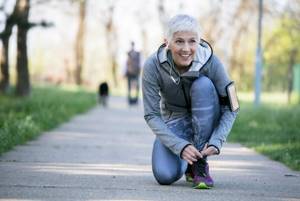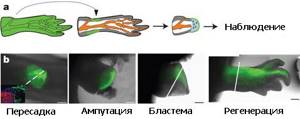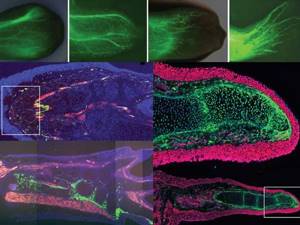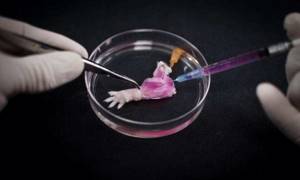How does a child's foot length change by month?
At the beginning of the period of growing up, the toddler's feet gradually change in structure, appearance and size, giving mom and dad the opportunity to control the progress of development. They should know what sizes and shapes are normal depending on the age of the child up to the 5th year of life. During this period, rapid changes occur in the structure of the child’s limb; it is constantly growing and changing. Orthopedists recommend wearing shoes from the age of one (earlier - according to indications). The first shoes must be the right size, comfortable and of high quality.
The negligence and inattention of parents regarding the formation of the baby’s feet can in the future backfire on the grown child, transforming into serious orthopedic troubles.
In the first months and years after the baby is born, its skeletal apparatus is not yet formed, the arch of the foot is absent, and the bones of the sole are in cartilaginous form. Nature intended it this way, because... Children, exploring the world around them or trying to learn to walk, can get dangerous injuries. The baby falls and lands on his buttocks, receiving no harm other than discomfort. An adult who fell in the same way would have to go to a traumatologist.
During the first five years, the length of a child's foot changes month by month, at a high rate, as cartilage tissue is replaced by bone tissue. For a comfortable process that does not distort the normal development of a child’s foot, the choice of shoes should be carried out with care and thoroughness.

The stores have a large selection of shoes, the production of which took into account the distinctive features of children's feet so that they can develop harmoniously. To accurately select the right model, the parent must understand what size boots to look for. Regular visits to an orthopedic surgeon are recommended.
Frequency of measuring baby's foot size:
- From birth to 1 year and from this mark to 3 years - once a quarter, at this time changes occur most quickly.
- 3 years - 6 years. – every 4 months.
- Children 6-10 years old. – once every 5 months.
A discovery of global significance.
This week, the US Federal Drug Administration (FDA) licensed Bonus Biogroup to use a special syringe for injecting laboratory-grown bone tissue. This is the first stage of obtaining the necessary permits, and it is assumed that the method, which is already used to treat patients in Israel, will be used throughout the world within 3 years.
“No one in the world has yet been able to grow human tissue outside the patient’s body,” says Bonus Biogroup CEO Dr. Shai Meretzky. “For the first time, we were able to grow living, functional tissue that fills bone defects.”
Child's foot size chart
The sizing chart is a useful cheat sheet for adults when they need to know the size of a child’s feet in order to choose new shoes, sandals, boots, etc. The information is needed by handicraft girls who were asked to knit booties for a baby.
Each baby has a different size foot; there are newborns with a foot length of 7 cm. Knowing this parameter, you can calculate the required size, even if the baby’s limb differs from the standard dimensions for his age. The table contains all the main types of sizes presented in domestic stores; it won’t be difficult to figure it out.
| Time from baby's birth | Measurement result | Size in Russia and Europe | American dimension | |
| cm | inches | |||
| Up to 3 months | 9.5 | 3.7 | 16-17 | 0-2 |
| 3-6 m. | 10.5 | 4.1 | 17-18 | 2.5 – 3.5 |
| 6 months – 1 year | 11.7 | 4.6 | 18-19 | 4-4.5 |
| A year and a half | 12.5 | 4.9 | 19-20 | 5 – 5.5 |
| 18-24 months | 13.4 | 5.2 | 21-22 | 6 – 6.5 |
| 2 years | 14.3 | 5.6 | 23 | 7 |
| 2.5 – 3 g. | 15.2 | 6 | 25 | 8 – 8.5 |
| Up to 3.5 years | 16 | 6.3 | 29 | 9.5 |
| 4 years | 17.3 | 6.7 | 27 | 10 – 10.5 |
| 5 l. | 18.4 | 7.2 | 29 | 12 |
How are foot size and life expectancy related? Research by scientists
Life expectancy is influenced by many factors. Of course, proper nutrition, sufficient physical activity and the absence of bad habits help achieve longevity. However, there are also not so obvious aspects.
Swedish scientists have found that the size of the foot may determine how long a person will live.

“Iron” man: scientists have found that longevity depends on the level of iron in the body
A deficiency is dangerous, and so is an excess.
What is the relationship between foot size and life expectancy?
Scientists from Sweden analyzed the life expectancies of 800 men and women from across the country. It turned out that there is a pattern between the age of death and the size of the leg.

Photo: istockphoto.com
For example, on average, women with size 40-41 lived to be 66-70 years old. And men who died at 67-69 years old had 46-48 foot sizes. If you look at the ratio table, you will notice that life expectancy is longer in people with average foot size (size 42-43 in men and 36-37 in women).
Does foot size really affect longevity?
However, scientists noted that one cannot rely solely on the results of the study. Although a certain pattern is observed, other factors affecting life expectancy cannot be neglected.

Photo: istockphoto.com
The researchers argue that the work could be considered absolutely correct if all the people mentioned in the studies led a healthy lifestyle and did not have any diseases.

Scientists have found that physical activity can improve genetics
We tell you how and how much you need to train for this.
What else does life expectancy depend on?
Many studies on longevity are published every year.
For example, scientists from Spain in 2020 found that women live longer than men due to hormones. The female hormone estrogen increases the activity of genes responsible for longevity. It also helps remove cholesterol from the body, which reduces the risk of cardiovascular diseases. While the male hormone testosterone, as a rule, pushes men to engage in various risky activities - fighting, driving at high speed, extreme sports, etc.

Photo: istockphoto.com
Dutch neuroscientist Dick Swaab found that life expectancy is also affected by metabolism and brain size. He writes about the results of his research in the book “We are our brain: from the uterus to Alzheimer’s.” The more active the brain, the larger its size and, as the scientist claims, its life expectancy. In addition, brain stimulation helps prevent Alzheimer's disease.

Super buckwheat: this grain can do a lot, even slow down aging
Scientists have found that Russians' favorite porridge helps produce longevity protein.
Although many factors influence your lifespan, don't rely entirely on hormones or leg size. In any case, you shouldn’t forget about an active lifestyle and proper nutrition - they will certainly help you maintain a youthful body and good spirits longer.
How to measure a child's foot
- To take measurements on a baby up to one year old, you will need a flexible tape-centimeter or a string and a ruler. To measure, you should connect the finger that most protrudes forward and the base of the baby’s heel with a thread and see how much distance separates them.
- It is recommended to study the size of the feet of older children who are able to stand independently and have an arched foot on a flat, hard surface (usually the floor). A blank paper sheet is taken, placed on a support, and the limb to be measured is placed on top. The outline of the sole is outlined with a pen, pencil or marker. On the resulting image, measure with a ruler how far the big toe is from the heel, then look for similar indicators in the specified table. To make the mark more visible, you can wet the limb or anoint it with a rich cream.
It is optimal to take measurements in the afternoon, closer to bedtime. At this point, the legs swell somewhat and become larger. You need to measure both legs in turn: there is a high probability that one of them will be a little longer - use it to calculate the size. For summer shoes, add 0.5 cm to the results obtained - heat can cause a child’s foot to swell. Winter shoes are taken with a margin of 1.5 cm, because you will need to put warm socks on the child, leaving space for free air movement.
The described technique for measuring the size of a child’s sole will help to avoid incorrect selection of equipment for him and resulting problems with the musculoskeletal system. It is important to remember that a comfortable and suitable model should also be attractive, since a toddler, in order to get bright and beautiful shoes, may lie that he is comfortable in them. It is worth paying attention to finding a balance in the quality of the shoes you buy - it is not advisable to take too expensive models, because they will soon become small, but even in cheap boots of poor quality, the child will be uncomfortable, his sole bones may be damaged.
Source: NogiNashi.ru
How to grow a new leg? Ask the axolotl!
Green squirrels revealed the secret of the salamander's revival Membrane based on materials from Wired Sciences and Technology Review
What a turn. Everything turned out to be completely different from what scientists previously thought. Many years of research into salamanders, champions of tissue regeneration, ignored an important feature of the restoration process and, moreover, looked for clues to it in the wrong places. And the main conclusion from the new work is optimistic: people have every chance of learning the amphibian trick.
The Mexican axolotl (Ambystoma mexicanum) taught scientists new lessons in growing limbs. This creature is one of the most remarkable examples of self-healing in the animal kingdom.
Why is there a tail, like some lizards: the axolotl successfully grows a new, fully functional leg to replace the one that was cut off, meticulously recreating all the bones, all the muscles, skin, blood vessels, nerve fibers... It only takes three weeks. Damaged lungs or spinal cord also in these salamanders (and in a number of others) are reconstructed remarkably well. And there are no scars left. I wish it were the same for us.
It has long been known that organ restoration begins with the appearance of a blastema - a tumor-like accumulation of cells, which then multiply and turn into various tissues. These new cells are generated by ordinary cells at the site of injury, but the blastema cells are undifferentiated. However, they somehow find out what they will turn into later. So there is no way a tail can appear instead of a lost leg. This control system is a real mystery, the veil of secrecy over which has been lifted by new experiments.

General scheme of experiments: a transgenic animal synthesizes a fluorescent protein in all its tissues. The specific type of cells that scientists are interested in is transplanted from this specimen into a normal animal, from which the limb is then cut off. After passing the blastema stage, the limb grows back, and fluorescent markers make it possible to accurately determine what type of cells the transplanted “aliens” have become (photo by Martin Kragl et.al.).
Previously, biologists assumed that blastema cells are pluripotent, that is, each of them can become a cell of skin, muscle tissue, and so on, giving rise to the growth of one or another tissue. A group of researchers from Germany and the USA, who published an article in Nature, showed that this idea is erroneous.
To find out the intricacies of regeneration, scientists introduced the gene responsible for the synthesis of green fluorescent protein (the famous “Nobel GFP”, so important for underwater organisms) into axolotls.
Next, biologists one by one took certain cells from transgenic animals and introduced them to unmodified salamanders in the area of future injury. And since the genetic information about GFP was preserved in all cells - the descendants of the borrowed cells, their position in the body, including in the newly grown organ, could be tracked with high accuracy.
This is how an amazing secret was revealed. Blastema cells are not identical, although they are not yet cells of certain tissues. But they remember which cells they came from, and thus former muscle tissue cells produce only muscles, nerve fiber cells - new nerves, skin cells - skin, and so on (with rare exceptions, more about them below).
“Many people had the impression that these same blastema cells were all one and the same,” says one of the lead authors of the new paper, Elly Tanaka, a professor at the Center for Regenerative Therapy in Dresden. The answer surprised not only other researchers, but also herself. It turned out that the blastema is not a homogeneous cell mass, but a cluster of progenitors generated by various tissues, which, in turn, each generate their own specific tissue.
That is, despite the blastema stage, these stem cells remain essentially different throughout the entire regeneration process.

In particular, experiments have shown that Schwann cells (which make up the protective sheath of peripheral nerve fibers), obtained by an experimental amphibian from a transgenic specimen (and therefore glowing green), after the stage of supposedly pluripotent stem cells (as previously believed) generate only Schwann cells. After the limb has regrown, the previously adopted Schwann cells, carrying the GFP gene, spread and multiply precisely along the nerve fibers, creating their sheaths. And at the same time, no other cells of the original tissues turn into Schwann cells.
Top: Schwann cell distribution at days 3, 7, 18, and 25 after amputation. Bottom: Various markers and imaging techniques allowed scientists to clearly separate some cell types from others (photo by Martin Kragl et.al.).
The researchers also discovered that some cells remember not only their identity, but also their position in the body. Cartilage cells, for example, remember that they previously formed the shoulder, or lower part of the limb, and migrate there in the new organ, while all the Schwann cells simply move indiscriminately to wherever they are needed.
Tanaka says this work will provoke a major shift in thinking about regeneration requirements. Explaining why salamanders can regenerate limbs but humans cannot, she explains: “The hypothesis was that salamanders can greatly change the identity of cells.”
But in fact, their cells never lose their “distinctiveness,” new experiments show; on the contrary, salamanders appear to use “limited” stem cells from specific tissues, capable of generating only a certain part of the new limb.
Tanaka points out that humans also possess tissue-specific stem cells that replace the corresponding tissue types. Only in our country such healing is going slowly. “Salamanders don’t do anything much more complex than human stem cells can do,” the researcher rejoices.
This means that pushing human cells to regenerate may not require such a radical step as turning cells into pluripotent ones, which many universities and institutes are vying with each other, sometimes demonstrating amazing results.
But now it turns out that nature’s patent does not provide for the “cellular clock” to return so many steps back, but only a small “rollback” occurs. And this process is more reminiscent of experiments with direct reprogramming of one cell type into another, bypassing the pluripotent stage.
Alejandro Sanchez Alvarado, a researcher at the University of Utah and Howard Hughes Medical Institute who also studies the phenomenon of limb regeneration in amphibians, recognizes that the method of genetically “tattooing” transplanted cells is an exciting new way to study tissue regeneration. And he supposedly shows that the hypothesis about the heterogeneity of blastema cells is correct. (By the way, Alvarado published his own work on this topic in the same journal Nature).
But he cautions that scientists still need to determine whether this principle holds true for both adult axolotls and newts. If the same mechanism underlies other examples of regeneration, it will fundamentally change scientists' understanding of the conditions for this remarkable process, says Alejandro.
But the basic question remains unanswered: if humans already have stem cells from different differentiated tissues, what still makes the difference between our cells and the cells of salamanders? And more broadly – other animals?
Tanaka and her colleagues intend to look into this issue: they will continue to conduct experiments in the hope of finding out which genes are turned on at certain stages of the process and what molecular signals induce cells at the site of the wound to form a blastema and follow the entire further path to the reconstruction of the limb.
Portal “Eternal Youth” https://vechnayamolodost.ru 07/03/2009
Mistakes when choosing children's sneakers and boots
In most cases, the selection of shoes for little fashionistas takes place together with the child. During fitting, parents are guided by the child’s answers or try to independently check whether the shoe size matches the foot parameters:
- They ask the little one if his shoes are too tight for him. If a child likes a certain model of sneakers, he will answer that it doesn’t press on anything, even if it’s tight. Therefore, it is not worth making a final decision based on the baby’s opinion. Another question is if the child does not like the style itself. Getting him to wear such a product will not be easy, so it is better to look for something else;
- The second mistake of parents can be identifying the length by sticking a finger between the foot and the heel of the shoe. In this case, the baby may curl up his toes, and you will think that the size is correct, although in fact your child needs looser shoes. This is especially typical for babies under one year old, when the baby does not yet understand what is required of him and acts instinctively;
- A common mistake is to apply the sole of the product to the foot in order to determine the desired size. It should be taken into account that the length of the sole can be significantly longer compared to the insole. Therefore, this method will not help resolve your issue.
How to grow an artificial leg
To grow an artificial leg, you need to take a connective tissue frame from someone else's limb and fill it with new cells - preferably your own.
Our legs and arms are made of muscles, bones, cartilage, blood vessels, ligaments, skin, and they are all put together so skillfully that it seems easier to make a completely artificial prosthesis to replace a lost arm or leg than to try to exactly replicate nature. However, this is exactly what researchers from the Massachusetts General Hospital managed to do, who were able to recreate a limb from cellular material. True, so far we are not talking about human hands and feet, but about the paw of a rat.
The rat's front leg was first stripped of all its own cells, and then a suspension of new cells was injected into the remaining membranes, which recreated muscles and blood vessels. (Photo by Bernhard Jank, MD, Ott Laboratory, Massachusetts General Hospital
The rat's paw becomes overgrown with cells. (Photo by Bernhard Jank, MD, Ott Laboratory, Massachusetts General Hospital Center for Regenerative Medicine.)
‹
›

The essence of the work was as follows. As you know, in addition to cells, in any organs and tissues there is also an intercellular matrix, consisting of proteins, glycoproteins, lipids, etc. The matrix helps the cell mass keep its shape, forming something like a framework for the cells to hold on to. They can be removed using special detergents, and the frame itself will remain intact. And so, passing detergent through the forelimb taken from a dead rat, Harald C. Ott
) and his colleagues cleared all the cells from it, but in such a way that the matrix of blood vessels and muscles remained in place. The procedure took 52 hours, and what happened to the paw can be seen here. The result was something like a three-dimensional outline of a limb, which now had to be filled with new cellular contents.
The paw was placed in a bioreactor, in which it was to become overgrown with cells. First, they were grown separately and then injected into the “empty” limb: the cells that were supposed to restore the blood vessels were placed in the matrix left over from the veins and arteries, those that were supposed to restore the muscles were injected into the muscular membranes. After five days, the limb was treated with a weak electric current so that the muscle cells formed the correct muscles, and after two weeks they checked what happened.
In an article in Biomaterials
the authors write that both vascular and muscle cells did everything correctly. The rat's paw received new blood vessels and new muscles, and when it was transplanted into another rat, the vessels provided blood circulation and the muscles contracted in response to electrical stimulation - the paw flexed at the wrist and flexed the phalanges of the fingers. It is worth noting, however, that there were no nerves in the paw, so the rat could not control the new front leg. Researchers are going to soon begin to restore the nervous system so that the transplanted limb can be felt and controlled.
The transplantation of an arm or leg from one person to another is no longer new, but in this case it is often necessary to pacify the immune system, which attacks the new limb as a foreign body. With the help of progenitor cells taken from the patient himself, it would be possible to grow all the necessary tissues of a leg or arm, but another problem arises: how to properly organize these tissues. It is not yet possible to grow a limb from scratch (unless you try to print it on a 3D printer), but you can try using some kind of frame. Of course, there may also be problems with the immune system, but not at all the same as when transplanting an entire leg or arm, with all their cells. By the way, the authors of the work managed to clear the baboon’s front arm of cells using the same method, so all that remains is to properly “stuff” it with human muscle, nerve and epithelial cells - and the new arm will be ready.
How to correctly determine the size of a child's feet?
Buying shoes often becomes a real challenge for parents. The little whimsical one does not want to try on the models on offer or even throws a tantrum in the store. Therefore, many mothers purchase baby products on their own.
To correctly choose the right shoes for a child under one year old, you can be guided by approximate indicators for a certain age:
- up to 3 months
– foot length no more than 9.5 cm, which is similar to size 16–17 (according to the European system); - from 3 to 6 months
– the foot can grow up to 10.5 cm, i.e. 17–18; - from 6 to 12 months
– the child’s foot will reach 11.5–11.7 cm, this is equal to shoe size 19.
For a baby under 1 year old, choosing shoes is not a problem. The approximate sizes are suitable for all babies without exception. And the child won’t really argue with the design.
An older child already has his own opinion about the choice of wardrobe. In addition, children develop differently, and the leg grows individually. Therefore, when choosing models for your child, use other rules:
- A proven way to find out the correct foot size is to trace the baby’s foot on paper and cut out a model from cardboard. The dense texture of the cardboard will prevent the form from being damaged when you check whether the selected model meets the required parameters;
- You can try on old shoes and base them on their designation. Of course, now you will need a larger pair than the previous one. Therefore, it will be easy to visually identify unsuitable models;
For babies older than one year, there is also a specially designed grid of shoe numbers. It can be used as an assistant when choosing new clothes for a child:
- 1-1.5 years – 12.5 cm = 20 rubles;
- 1.5-2 years – 13.4 cm = 21-22 rubles;
- 2 years – 14.3 cm = 23 rubles;
- 2.5 years – 14.7 cm = 24 rubles;
- 2.5-3 years – 15 cm = 25 rubles;
- 3-3.5 years – 16 cm = 26 rubles;
- 4 years – 17.3 cm = 27 rubles;
- 4-4.5 years – 17.6 cm = 28 rubles;
- 5 years –18.5 cm = 29 rub.
Of course, the size chart is not entirely correct in every case. Because the individual development of babies’ legs is somewhat different. However, it allows you to at least roughly determine what foot size should be at a certain age.
To make buying children's shoes useful and enjoyable, follow these tips:
- Support your child's desire to choose and compare, this will serve you in double favor. Firstly, you buy something that your child likes and he will definitely wear it. Secondly, you will instill in your baby a taste for choosing things and teach you to choose the right shoe size;
- Buy models with a small margin, since the child’s leg grows very quickly. This means that in a couple of months the shoes will be too small;
- You should not chase exclusively natural products, especially in conditions of lack of finances. Opt for models made from modern synthetic materials. They are affordable and harmless even for children under 1 year old;
- In addition to the correct size, it is equally important to choose the correct shoe style. Because if you can buy lace-up sneakers for children under 1 year old, you should not offer such shoes to a 2-3 year old child. The ability to untie fastenings does not mean that the baby will tie them back on his own.
- Pay attention to orthopedic models. Today, orthopedic doctors advise even healthy children to wear such shoes.
These simple tips will help you make the right choice and buy really useful and suitable shoes for your baby.
Source: zen.yandex.ru
Child's foot size by age: table and tips for measuring
It is useful for parents to know the child's foot size by age. After all, in children it is just developing. To avoid problems with both appearance and health in the future, it is important to choose high-quality shoes.
It will help the arch of the foot to form correctly, so the choice must be taken responsibly. In sandals or boots that are too small, the baby simply will not be able to move. If the leg is too large, it will not be securely fixed, which can lead to its incorrect development.
You should not buy size 21 boots for a 10 cm foot, expecting to save money and wear them for more than one season.
What is not recommended to do?
The task is complicated by the fact that the child cannot explain his feelings. A very small child can’t speak yet, he won’t be able to tell whether the cute boots of size 21 fit him or not.
But even an older child does not always understand how much pressure the shoes he tries on weigh on him. Especially if he likes her in appearance. And already on the first walk it turns out that he is uncomfortable.
Since high-quality products are not cheap, you don’t want to make mistakes when purchasing.
It is not always worth trusting a child’s feelings. But there are other mistakes that parents sometimes make when selecting. For example, they insert a finger between the heel and the heel. It is unlikely that this method will provide reliable information, because the baby may curl his fingers. When he starts walking calmly at home, it turns out that sneakers with a 12-centimeter insole are too tight for him.
It is also not recommended to put the foot of a one-year-old or older toddler on the sole of a favorite pair. Depending on the style, the length of the insole, which is what matters, can vary greatly. If the external length is 12 cm, then the internal length can be 11 or 10. This is a very unreliable method.
Foot size at different ages
But how to choose shoes so as not to make a mistake with the size? When buying your first shoes, that is, booties for newborn boys and girls, this is usually not so important. After all, the baby is not walking yet, the main thing is that they are not noticeably small for him and do not fall off his feet.
But if we are talking about the first steps, then you have to pay close attention to convenience. Finding suitable sandals is not that difficult; how they fit is clearly visible when you try them on. But with shoes and boots it’s more difficult.
The table can tell you the approximate dimensions.
- In children under three months of age, the leg does not exceed 9.5 cm. It is this value that you should focus on when choosing your first booties. European mesh defines the length as size 16-17.
- By 6 months the leg grows to 10.5 cm and size 17-18.
- A one-year-old baby's feet are on average 11 to 12 cm, that is, size 19.
- At 1.5 years, the leg is about 13-13.5 cm - size 20 or 21.
- At two years old - 14.5 cm and size 24.
- At 3 years old - 15.5 cm - size 25.
- At 3.5 years old - 16 cm and size 26.
- At 4 years old - 17 cm and size 27.
- At 4.5 years old - 17.5 cm and size 28.
- At 5 years old - 18 cm and size 29.
Of course, any table provides only average values. A particular child’s leg may differ significantly from the average, and in any direction. Some children grow faster, others slower, this affects both height and foot size. In addition, boys are often larger than girls. Therefore, to determine the exact length of the foot, it must be measured.
How to measure your leg?
To select booties designed for newborns, just take a measurement using a tape measure. If you don’t have it at hand, you can attach a string to the leg, mark the length and determine it in centimeters with a ruler.
Advice
It is advisable to measure your child’s feet before each trip to the store. In a couple of weeks, the values can change noticeably.
The legs of children who can already stand are measured differently. It is especially important to choose this method after a year. You need to put the baby on a piece of cardboard and trace the feet. Cardboard is preferable to paper as it holds its shape well.
Having received a result, for example, 11 or 12 centimeters, it is convenient to go to the store with such a cardboard insole and, lowering it inside the desired pair, determine how suitable it is. Measurements should be taken in the evening, since the leg grows slightly during the day.
It is important to measure both feet, as they are often different. Then you should focus on the big one. If the fidget does not want to stand while the mother takes the necessary measurements, then you can wet his feet with water, lower him onto cardboard or paper and let him go about his business.
You can determine the size using prints.
How fast does the leg grow?
Babies grow quickly, and children also have developmental spurts when their height and weight rapidly increase and, accordingly, their legs grow. Because of this, you may need more than one pair of sandals or boots for one season.
Then you can come to the store with a pair that has been worn out for several months and just take a size larger. But you need to be careful: the sizing chart may differ from different manufacturers. For some, size 19 is 11 centimeters, for others, for example, 12.
Moreover, even in different lines from the same company there are noticeable differences, so the general table is not always reliable.
https://www.youtube.com/watch?v=Z1GLLoHcM-8
Careful measurements are also needed when purchasing children's shoes in online stores. Not all of them provide the opportunity to try on and immediately change the chosen pair. So we have to study the necessary values. You must also remember that the smaller the child, the faster his leg grows.
Up to 3 years, the size changes on average every 3 months. Children's shoes are usually enough for one season, no more. Although it happens that size 21 sandals, which fit perfectly at the beginning of summer, are too small already in the middle of summer. From 3 to 6 years old, the leg usually grows one size in 4 months, after 6 years - in 5 months.
How to choose shoes?
To purchase a truly successful pair of shoes, from booties to winter boots, you should pay attention to the following recommendations.
- Shoes need to be purchased with a small reserve, because children’s feet grow quickly. For summer sandals, a gap of 0.5-0.7 centimeters is considered acceptable. For winter boots - 1-1.5 cm, because there should be room for a warm sock. That is, if the baby’s foot is 12 centimeters, then a winter pair should be chosen in size 21, with an insole of 13.5.
- When choosing children's shoes for the first years of life, you need to ensure that they comply with the standards. It should have a small heel and the heel should be securely fixed. In this case, it is better to choose a sole that is flexible enough. This is especially important up to 3 years of age.
- If the baby has grown a little, he is more than 3 years old, then it is worth involving him in the selection process. He will be flattered that adults trust him.
- The ties also matter. The laces, of course, secure the foot well. But it will be difficult for the baby to cope with them on his own. So it makes sense to give preference to Velcro.
It is also worth knowing that the sizing chart for shoes in different countries is very different, as different systems are used. In Europe it is the metric system, in the USA it is the mass system.
Therefore, European size 21 corresponds to American 5.5. England has its own table, since measurements there are not carried out in centimeters.
For a foot of 11 centimeters, domestic stores will offer shoes marked 19, in American stores - 4, and in English - 3.
If you know how to correctly determine the length of your baby’s feet, then choosing booties for newborns and other children’s shoes will not be difficult. The table will help you figure out which size to choose if you are 11 or 12 centimeters. Or if you like size 21 boots, will they suit your little one?
We recommend reading the article on how to choose a high chair for feeding your baby
Source: https://therebenok.ru/razvitie/fizicheskoe/razmer-nogi-rebenka-po-vozrastu.html
Why do you need to measure your child's feet?
Experts believe that points responsible for every organ in the human body are concentrated in the feet. Therefore, his future health depends on the correct development of a child’s foot. It is not for nothing that orthopedists never tire of telling young parents that many problems with small and large joints arise due to oversight or incorrectly selected shoes.
But in addition to shoes, the genes of the parents influence the development of the leg. If you notice a developing deviation in time, you can prevent many diseases. Of course, not all genetic diseases can be cured, but the sooner they are detected, the more likely it is that negative consequences can be minimized.
To help specialists and parents, special tables have been developed that indicate the size of the child’s feet by month in centimeters.
Features of the development of a child’s legs
In newborns, the feet spend almost a year preparing for upright walking. At first they have a lot of cartilaginous tissue. By the age of one year, when the baby begins to take his first steps, his feet receive an additional stimulus for development, since constant walking exercises stimulate the nerve endings.
The size of a child’s feet by month can be determined from the average statistical indicators, which may allow several centimeters of error. Therefore, there is no need to worry too much that your child does not fit into his age category. Maybe this is his peculiarity.
In the first few years of life, a baby's foot has a flexible, pliable structure. All joints and muscles are in the process of formation. Therefore, up to the age of twelve, it is worth paying attention to the development of the foot and gait. After this age, the foot, although still continuing to grow, looks more like an adult.
Child’s foot size by month in centimeters: table
Many parents keep a diary of physical development after the birth of their children. This is especially important in the first year of life. The volume of the head, chest, weight and body length are very significant indicators.
But such a criterion as foot size plays an important role in assessing the baby’s growth.
To make it more convenient to monitor the formation of the foot, standards have been developed that indicate the size of a child’s foot by month.
Why do you need to measure your child's feet?
Experts believe that points responsible for every organ in the human body are concentrated in the feet. Therefore, his future health depends on the correct development of a child’s foot. It is not for nothing that orthopedists never tire of telling young parents that many problems with small and large joints arise due to oversight or incorrectly selected shoes.
But in addition to shoes, the genes of the parents influence the development of the leg. If you notice a developing deviation in time, you can prevent many diseases. Of course, not all genetic diseases can be cured, but the sooner they are detected, the more likely it is that negative consequences can be minimized.
To help specialists and parents, special tables have been developed that indicate the size of the child’s feet by month in centimeters.
In newborns, the feet spend almost a year preparing for upright walking. At first they have a lot of cartilaginous tissue. By the age of one year, when the baby begins to take his first steps, his feet receive an additional stimulus for development, since constant walking exercises stimulate the nerve endings.
The size of a child’s feet by month can be determined from the average statistical indicators, which may allow several centimeters of error. Therefore, there is no need to worry too much that your child does not fit into his age category. Maybe this is his peculiarity.
In the first few years of life, a baby's foot has a flexible, pliable structure. All joints and muscles are in the process of formation. Therefore, up to the age of twelve, it is worth paying attention to the development of the foot and gait. After this age, the foot, although still continuing to grow, looks more like an adult.
Measurement table
To control and check the formation of the legs, parents are advised to monitor the size of the feet. To make it more convenient to monitor growth, in the first years you should check the recommendations, which indicate the child’s foot size by month. The table is compiled in centimeters. The first year is scheduled monthly, then in the table the gradation goes by year.
It is best to take as a basis a table designed for children without taking into account gender. This approach will be more correct, since not all girls have miniature legs, and boys have large ones. There are always exceptions.
Based on the results of the observations, it was found that a baby’s foot can grow by 4-6 centimeters in the first few years, that is, the increase is 2-3 centimeters per year. From the age of three, the leg grows by 1-1.5 cm. And in subsequent years it will lengthen by an average of 1 cm per year.
The size of your child's feet by month can be recorded in the baby's diary. It largely depends on nutrition, physical activity, and genetic predisposition.
What to pay attention to
When the baby's feet begin to actively grow, the first difficulty appears - choosing shoes.
To choose the right shoes for a baby under one year old, you need to compare the inscriptions on their soles and feet according to age. For example, the foot size of a 6 month old child should be about 10.5 centimeters.
When making a purchase and taking into account possible difficulties with fitting, you can turn to existing standards for help.
If you know the foot size of an 8-month-old child who is also starting to try to walk, it is better to look for shoes from manufacturers that adhere to generally accepted standards. This will allow, thanks to the correspondence tables, to choose suitable boots without involving the baby.
How to measure a child's foot
To correctly measure your baby’s legs, you need to have a soft tape on hand with markings in centimeters. If the child is still very small, then you should measure from the most protruding toe to the base of the heel. When he can stand and walk, it is better to measure his leg on the floor.
Place the baby's foot on a sheet of paper and trace it with a pen or felt-tip pen. Then measure the distance from the heel to the big toe with a ruler and find a similar indicator in the table that shows the child’s foot size by month.
It is better to measure your feet in the evening: at the end of the day, your feet fill out and become a little larger. Therefore, it is better to do it in the evening. In addition, all people have one foot slightly longer than the other. This feature is also observed in children. To make the data more accurate, you should take the necessary measurements of both legs.
Measurement table
To control and check the formation of the legs, parents are advised to monitor the size of the feet. To make it more convenient to monitor growth, in the first years you should check the recommendations, which indicate the child’s foot size by month. The table is compiled in centimeters. The first year is scheduled monthly, then in the table the gradation goes by year.
It is best to take as a basis a table designed for children without taking into account gender. This approach will be more correct, since not all girls have miniature legs, and boys have large ones. There are always exceptions.
Based on the results of the observations, it was found that a baby’s foot can grow by 4-6 centimeters in the first few years, that is, the increase is 2-3 centimeters per year. From the age of three, the leg grows by 1-1.5 cm. And in subsequent years it will lengthen by an average of 1 cm per year.
The size of your child's feet by month can be recorded in the baby's diary. It largely depends on nutrition, physical activity, and genetic predisposition.
What to pay attention to
When the baby's feet begin to actively grow, the first difficulty appears - choosing shoes. To choose the right shoes for a baby under one year old, you need to compare the inscriptions on their soles and feet according to age. For example, the foot size of a 6 month old child should be about 10.5 centimeters. When making a purchase and taking into account possible difficulties with fitting, you can turn to existing standards for help.
If you know the foot size of an 8-month-old child who is also starting to try to walk, it is better to look for shoes from manufacturers that adhere to generally accepted standards. This will allow, thanks to the correspondence tables, to choose suitable boots without involving the baby.
How to measure a child's foot
To correctly measure your baby’s legs, you need to have a soft tape on hand with markings in centimeters. If the child is still very small, then you should measure from the most protruding toe to the base of the heel. When he can stand and walk, it is better to measure his leg on the floor.
Place the baby's foot on a sheet of paper and trace it with a pen or felt-tip pen. Then measure the distance from the heel to the big toe with a ruler and find a similar indicator in the table that shows the child’s foot size by month.
It is better to measure your feet in the evening: at the end of the day, your feet fill out and become a little larger. Therefore, it is better to do it in the evening. In addition, all people have one foot slightly longer than the other. This feature is also observed in children. To make the data more accurate, you should take the necessary measurements of both legs.
How it works.
From a patient with a defect in any skeletal bone, a certain amount of fat is pumped out and sent to the laboratory. There, tens of thousands of osteocyte precursor cells (bone cells) are isolated from fat. These cells are grown for 2 weeks and injected into the patient at the site of the bone defect. They create bone tissue in the empty space of the defect, and after a few months the patient’s functionality is completely restored.
Bonus Biogroup is currently conducting clinical trials to restore the bones of the upper and lower jaw under the direction of oral and maxillofacial surgeon Dr. Efraim Tzur. The limb bone restoration trial is being led by Nimrod Rosen from HaEmek Hospital.
The new method, as already mentioned, was used in the treatment of 40 patients. One of them had broken bones in his hand as a result of an accident at a construction site. He was given a cell suspension, and after 2 months he was able to return to work.
What measurements are needed when choosing shoes?
When calculating the size of a child's foot, a simple formula is used: measured foot length in centimeters + margin for slight movement of the leg during movement + margin for growth. Typically, the difference between adjacent shoe sizes is only 0.5-1 cm.
It is necessary to measure the leg only while standing; in this position, the foot acquires a natural position: it is straightened and has all the support points.
There is such a characteristic as the fullness or rise of shoes. Children's shoes are usually produced without taking this parameter into account and are unified. Velcro, laces, and elastic inserts allow you to adjust the rise of boots and sneakers for a more secure fit.
The size of a child's foot, of course, cannot be programmed. But watching the growth of the foot and the correct development of the legs is quite realistic. The standards established by specialists are not a task to be fulfilled. But the development of the child within their limits will help to be sure that the baby is growing without deviations.
Some pathologies can be indicators of various serious diseases. If you pay attention to foot development in time, you can prevent many serious problems. Genetic abnormalities are almost impossible to correct, but modern medicine is quite capable of controlling them.
Source: FB.ru
How to find out your child's foot size
Finding out the approximate foot size of a small child at home is not difficult at all. There are several ways to do this:
- Measure your foot using a centimeter;
- Use the classic formula;
- Apply a table of foot sizes according to the child’s age.
Child foot length at different ages
If you need to determine the size of the feet of an infant who cannot yet stand firmly on his legs, then you need to do the following:
- Gently grasp the baby's foot.
- Straighten it out.
- Make sure that the baby does not curl his fingers, otherwise the result will be incorrect.
- Take a rigid ruler and measure the distance from the tip of your biggest toe to your heel (the outermost point).
- Carry out similar actions with the second leg of the one-year-old baby.
- When measuring, the largest values should be taken into account.
- Compare the result with the tabular data.
There is a classic formula for determining foot length, as well as a method for measuring fullness (height). The first option involves summing the following values:
- Foot length;
- Space for leg growth;
- Space for foot movement during movement.
The second option (by fullness) involves measuring the foot at the widest points of the toe area. This parameter is denoted by five Latin letters: the first two characterize a thin leg, the second two – average fullness or slightly above average, the last – a full leg with a wide and high foot. To establish the exact meaning, a half sign can be added to each letter. The next parameter differs from the previous one by 7 mm, the half-length is 3.5 mm.
How to find out children's foot size
The easiest and most common way to determine the length of a child's foot is using a measuring tape. To do this you need to do the following:
- Prepare a sheet of paper, a pencil and a ruler.
- Ask your child to stand on a blank sheet of paper.
- The foot should be placed flat on the plane. It is important that the child does not curl his fingers.
- The foot is outlined with a pencil. Another option is to place a foot moistened with water on the paper.
- Measure the resulting silhouette or imprint with a centimeter.
- Check the resulting figure with the metric grid data and determine the size.
During the measurement, you need to ensure that the child’s legs are level and the baby rests confidently and completely on his feet. At the end of the procedure, you need to add 1/2 cm to the result (if you plan to buy summer shoes) or 1.5 cm (for winter shoes). Thanks to this, the boots will not be too big and at the same time will fit well on feet dressed in warm socks. In addition, there will be free space for air inside, which will allow the shoes to retain heat for as long as possible.
To compare foot length with shoe sizes in a store, you can cut out a stencil and apply it to the sole of the product like an insole.
The foot length of a one-month-old child is determined every 3 months; in children aged 6-10 years, the foot size is determined every 5 months.
This method has several advantages:
- allows you to get the most accurate values;
- the process is easy to carry out;
- indicators do not depend on gender, specific age and height of the baby.
Table of correspondence between the age of a child up to one year and foot sizes in centimeters
Since children's feet grow very quickly, children often have to buy shoes.
It's no secret that shopping in search of a suitable product takes a lot of time and can be very tiring for a small child. For this reason, many parents prefer to take measurements from their children, in this case, measure the child’s foot size by age and, leaving the kids at home with their grandparents, go shopping.
How to find out the size of a small child's feet by month, how to determine the size of children's shoes by the child's age? This article will answer these and other pressing questions.
To make children's shoes comfortable, you need to correctly determine your foot size and choose the appropriate product.
Obviously, a newly born baby does not need shoes. Socks and warm booties are used as an analogue at this age. After some time, the baby grows up and begins to walk independently. From this moment on, there is a need to wear shoes.
How to find out your child's foot size
Finding out the approximate foot size of a small child at home is not difficult at all. There are several ways to do this:
- Measure your foot using a centimeter;
- Use the classic formula;
- Apply a table of foot sizes according to the child’s age.
On a note. If a table is used to calculate the size of a child's foot, it is important to remember that each child develops individually.
Therefore, the size of the leg in each individual case may differ slightly from generally established standards, which are indicated in the size chart.
In order for new shoes to be comfortable and completely fit, it is necessary to take into account not only the length of the foot, but also the age and height of the baby.
Child foot length at different ages
If you need to determine the size of the feet of an infant who cannot yet stand firmly on his legs, then you need to do the following:
- Gently grasp the baby's foot.
- Straighten it out.
- Make sure that the baby does not curl his fingers, otherwise the result will be incorrect.
- Take a rigid ruler and measure the distance from the tip of your biggest toe to your heel (the outermost point).
- Carry out similar actions with the second leg of the one-year-old baby.
- When measuring, the largest values should be taken into account.
- Compare the result with the tabular data.
Advice. To find out the length of a child’s foot under one year old, you can use a string: it is applied to the foot in the same way as described above, then measured with a ruler and the result is recorded.
There is a classic formula for determining foot length, as well as a method for measuring fullness (height). The first option involves summing the following values:
- Foot length;
- Space for leg growth;
- Space for foot movement during movement.
The second option (by fullness) involves measuring the foot at the widest points of the toe area.
This parameter is denoted by five Latin letters: the first two characterize a thin leg, the second two – average fullness or slightly above average, the last – a full leg with a wide and high foot.
To establish the exact meaning, a half sign can be added to each letter. The next parameter differs from the previous one by 7 mm, the half-length is 3.5 mm.
On a note. The parameter for measuring the fullness of a foot on children's shoes is rarely indicated. Basically, universal shoes are produced for children without taking into account the instep. Such products have fasteners, laces, Velcro or other means of fastening. At the same time, some shoe models for the summer season provide for fullness adjustment using fasteners.
How to find out children's foot size
The easiest and most common way to determine the length of a child's foot is using a measuring tape. To do this you need to do the following:
- Prepare a sheet of paper, a pencil and a ruler.
- Ask your child to stand on a blank sheet of paper.
- The foot should be placed flat on the plane. It is important that the child does not curl his fingers.
- The foot is outlined with a pencil. Another option is to place a foot moistened with water on the paper.
- Measure the resulting silhouette or imprint with a centimeter.
- Check the resulting figure with the metric grid data and determine the size.
Important! Similar actions should be performed with the second foot. The fact is that the size of one mark is almost always larger than the second. Of the two values obtained, you need to choose the larger one.
During the measurement, you need to ensure that the child’s legs are level and the baby rests confidently and completely on his feet.
At the end of the procedure, you need to add 1/2 cm to the result (if you plan to buy summer shoes) or 1.5 cm (for winter shoes).
Thanks to this, the boots will not be too big and at the same time will fit well on feet dressed in warm socks. In addition, there will be free space for air inside, which will allow the shoes to retain heat for as long as possible.
Trace the foot to determine size
To compare foot length with shoe sizes in a store, you can cut out a stencil and apply it to the sole of the product like an insole.
On a note. It is better to take measurements in the evening, since during the day the foot is subjected to physical activity, which is why it increases slightly in size by night. In addition, blood flow improves in the evening, which also affects the length of the foot.
The foot length of a one-month-old child is determined every 3 months; in children aged 6-10 years, the foot size is determined every 5 months.
This method has several advantages:
- allows you to get the most accurate values;
- the process is easy to carry out;
- indicators do not depend on gender, specific age and height of the baby.
Important! The resulting figures cannot be rounded. You need to take into account every millimeter, then it will be almost impossible to make a mistake with the choice of suitable shoes.
How fast does the leg grow?
Child's head size by age
Children's feet grow every day, but these changes become noticeable only after a certain time. At the time of birth, the length of a newborn’s foot is about 7.5 centimeters. Subsequently, the size of the foot increases very quickly.
During the second year of life, the legs grow by 2-3 centimeters, and the feet add the same amount in the third year. The growth process stops by the age of 15, by which time the leg size is 23-26 centimeters.
In girls, growth ends earlier than in boys - at 11-14 years old, while in the latter this period can last up to 18 years.
As the foot grows larger, its shape and structure also change. For each age period, certain types of shoes are selected that take into account the child’s developmental characteristics.
Table by age in centimeters
How to choose shoes for a child under 1 year old
In order for the child’s foot to develop normally, the baby must wear shoes that fit the foot size. It is important that children's shoes are not too big or too small. Otherwise, foot deformation may occur. A special table will help you determine the length of your child’s feet in relation to age.
Sizing chart for children's shoes
How to buy shoes correctly
A child tends to outgrow clothes and shoes very quickly. You should not save on shoes for a child, that is, buy products for several years at once. It is better to purchase shoes of the appropriate size with a small margin. Otherwise, in the first season it will be large, and by the next, most likely, it will be too cramped.
For children aged one to three years, shoes are chosen taking into account the following nuances:
- At this stage of development, a child’s leg grows by 2-3 cm per year;
- Measurements are taken once a month;
- During this period, shoes are worn for only one season, so it makes no sense to purchase products back to back. However, the margin should not exceed one to one and a half cm, since at this age the baby learns to walk and moves a lot, and the foot must be clearly fixed, otherwise the child will often fall.
Shoes can be selected by age only with standard height and weight indicators:
- For children aged 6-9 years, size 17 is suitable;
- For 9-12 years old – 18;
- For 12-18 years old – 19.
Products for children from 3 to 6 years old are selected in accordance with the following rules:
- Foot size increases by 2 sizes per year.
- Foot measurements are taken once every 2-3 months.
- The stock of shoes should be 0.5-1 cm. If shoes of size 25 have become tight for a child, then the recommended size of a new pair of products is 26-27. A small free space in the shoes will allow children's feet to develop normally and will not disturb their shape. Size 28 will not be suitable in this case, since this season the shoes will be frankly too big for the baby, and next year a new pair will be needed - already size 29.
- At this stage of development, boots with arch supports should only be purchased on the recommendation of a doctor.
If the child is from 6 to 10 years old, the choice of shoes depends on the following features:
- Foot size increases by 1-3 cm per year.
- Foot size determination is carried out every 3-4 months.
- At the age of 6, the child’s cartilage tissue has already hardened, and the feet acquire a clear head start and instep.
When buying children's shoes online, you need to pay attention to the following details:
- The size of the left and right legs may differ (the maximum difference is 6 mm), therefore, after measurement, both values are recorded, and the choice is made in favor of the one that is larger;
- During movement, the foot moves slightly forward. Therefore, if you wear shoes that are too tight, there will be no free space for your toes. As a result, the child will feel tight in such shoes, and walking will be difficult. The size chart for children's shoes takes into account the allowance;
- If your winter boots turn out to be too roomy, a thick wool insole will help correct the situation, which will reduce the shoes by half a size;
- You should not rely on breaking in the shoes, as the child’s feet are constantly and rapidly growing.
If you neglect the above rules, your baby may have problems of the following nature:
- When buying shoes for growth:
- The leg is not fixed when moving, which prevents normal walking, resulting in an increased risk of injury;
- Calluses appear;
- The legs get tired quickly, as during movement the muscles strain very much to keep the shoes on the foot;
- The gait becomes shuffling.
- When wearing shoes that are too tight:
- The shape of the fingers changes as they constantly bend. Walking like this has a negative impact on your posture;
- Due to the fact that the blood vessels are compressed, the legs freeze faster.
Size chart in different countries
When measuring a child's foot using a ruler, the result is a metric size (mm).
Previously, there was only one system by which the size of children's shoes was indicated in cm, equal to the length of the foot. The difference between the sizes was 5 mm. Now another system has become widespread - the non-mass system.
In this case, the size is indicated in so-called points, each of which is equal to 0.66 cm.
In Europe, foot size is determined using the stichmass system. In Russia, metric is most often used, but recently the first option is also gaining popularity.
Important! Manufacturers in different countries are guided by their own size charts (foot length can be determined in cm, inches, lengths, etc.), so when choosing a product you need to pay attention to the manufacturer and take into account the sizes according to the corresponding tables.
Country Size Chart
Signs of choosing the right shoes:
- The boots are easy to put on and take off;
- The shoes fit well, the foot is clearly fixed in it and at the same time not pinched;
- The child’s fingers should reach the toe of the shoe, but not rest against it;
- An adult's little toe can fit between the back of a shoe and a child's heel.
How to spot tight shoes
Shoes should always have a small supply. You can determine it by the insole of the product that the baby is currently wearing. You need to add a few centimeters to the length of the insole, then you will get the optimal size for the child.
To understand that the stock has been selected incorrectly, you need to pay attention to the following indicators:
- The child's shoes fit tightly;
- The arch support is not in its place (it should be located under the arch of the foot);
- Compare the model of the child’s foot with the sole of the product. To do this, place the stencil inside the shoe and determine the reserve by the heel.
You can define tight shoes like this:
How to tell if shoes are too small
Signs of tight shoes are:
- The baby tucks his fingers when walking;
- Calluses, abrasions, and redness appeared on the feet.
Determining which size of children's shoes will suit your child is not difficult. To do this, it is enough to use standard methods of measuring the foot and compare the indicators with the data in the table.
Source: https://kpoxa.info/uxod-razvitie/razmer-nogi-rebenka-vozrastu.html
How fast does the leg grow?
Children's feet grow every day, but these changes become noticeable only after a certain time. At the time of birth, the length of a newborn’s foot is about 7.5 centimeters. Subsequently, the size of the foot increases very quickly. During the second year of life, the legs grow by 2-3 centimeters, and the feet add the same amount in the third year. The growth process stops by the age of 15, by which time the leg size is 23-26 centimeters. In girls, growth ends earlier than in boys - at 11-14 years old, while in the latter this period can last up to 18 years.
As the foot grows larger, its shape and structure also change. For each age period, certain types of shoes are selected that take into account the child’s developmental characteristics.
Until what age do girls’ feet grow in size?
Body growth does not continue throughout a person’s life cycle. People often wonder: to what age do girls’ legs grow? Under this question, one may be interested in both leg length and foot size, or both. Girls who dream of a model appearance want long legs, but don't want big feet. This may be a practical interest - should you prepare to buy a new pair of shoes if your foot size may increase, or will the previously purchased shoes still serve?
Doctors say that the size of the foot should correspond to the length of the legs within certain limits. Lack of symmetry will not only be noticeable, but will also create real physical problems for a person, such as excessive stress on the legs and problems when walking.
To the question “How many years does a girl’s leg grow?” It is impossible to give one exact answer. It all depends on individual characteristics caused by genetics, lifestyle or health problems:
- may cease by age 15, plus or minus one year;
- sometimes continues until adulthood;
- in some cases, the process does not stop until the age of 23-25.
Doctors say that in most cases, active growth of the leg continues until 16, maximum 19 years. After this it may continue, but will not be significant.
Over the next year, your foot will not become one size larger, two or three.
Experts say that there is no ideal indicator for the human body. Tall girls have some problems, short girls have others. So, it is worth noting some points:
- girls with below average height are more likely to suffer from cardiovascular diseases;
- women with below average height are more likely to develop diabetes;
- girls with above average height are more likely to develop cancer, in particular breast cancer.
The above information should not be taken as a verdict. This is far from true. We are not talking about the fact that, for example, a tall girl will develop a malignant tumor, and a short girl will develop diabetes. We are talking about percentages. Regular medical examination will allow you to monitor your body, promptly identify a predisposition to a particular disease, or identify diseases in the early stages, which contributes to effective treatment and the prescription of an effective course of prevention.
If we talk about growth in general, it depends on the “growth hormone”, which is produced by the pituitary gland. Located in the brain, the pituitary gland produces various hormones, including those that regulate human growth. Problems with the pituitary gland can lead to growth disturbances, sometimes in very severe forms. This will result in:
- Dwarfism.
- Gigantism.
Excessive secretion of “growth hormone” by the pituitary gland leads to rapid growth, and growth may be disproportionate - the legs will lengthen, but the arms or head will remain the same size, or only the feet, hands, and fingers may grow.
How to buy shoes correctly
A child tends to outgrow clothes and shoes very quickly. You should not save on shoes for a child, that is, buy products for several years at once. It is better to purchase shoes of the appropriate size with a small margin. Otherwise, in the first season it will be large, and by the next, most likely, it will be too cramped.
For children aged one to three years, shoes are chosen taking into account the following nuances:
- At this stage of development, a child’s leg grows by 2-3 cm per year;
- Measurements are taken once a month;
- During this period, shoes are worn for only one season, so it makes no sense to purchase products back to back. However, the margin should not exceed one to one and a half cm, since at this age the baby learns to walk and moves a lot, and the foot must be clearly fixed, otherwise the child will often fall.
Shoes can be selected by age only with standard height and weight indicators:
- For children aged 6-9 years, size 17 is suitable;
- For 9-12 years old – 18;
- For 12-18 years old – 19.
Products for children from 3 to 6 years old are selected in accordance with the following rules:
- Foot size increases by 2 sizes per year.
- Foot measurements are taken once every 2-3 months.
- The stock of shoes should be 0.5-1 cm. If shoes of size 25 have become tight for a child, then the recommended size of a new pair of products is 26-27. A small free space in the shoes will allow children's feet to develop normally and will not disturb their shape. Size 28 will not be suitable in this case, since this season the shoes will be frankly too big for the baby, and next year a new pair will be needed - already size 29.
- At this stage of development, boots with arch supports should only be purchased on the recommendation of a doctor.
If the child is from 6 to 10 years old, the choice of shoes depends on the following features:
- Foot size increases by 1-3 cm per year.
- Foot size determination is carried out every 3-4 months.
- At the age of 6, the child’s cartilage tissue has already hardened, and the feet acquire a clear head start and instep.
When buying children's shoes online, you need to pay attention to the following details:
- The size of the left and right legs may differ (the maximum difference is 6 mm), therefore, after measurement, both values are recorded, and the choice is made in favor of the one that is larger;
- During movement, the foot moves slightly forward. Therefore, if you wear shoes that are too tight, there will be no free space for your toes. As a result, the child will feel tight in such shoes, and walking will be difficult. The size chart for children's shoes takes into account the allowance;
- If your winter boots turn out to be too roomy, a thick wool insole will help correct the situation, which will reduce the shoes by half a size;
- You should not rely on breaking in the shoes, as the child’s feet are constantly and rapidly growing.
If you neglect the above rules, your baby may have problems of the following nature:
- When buying shoes for growth:
- The leg is not fixed when moving, which prevents normal walking, resulting in an increased risk of injury;
- Calluses appear;
- The legs get tired quickly, as during movement the muscles strain very much to keep the shoes on the foot;
- The gait becomes shuffling.
- When wearing shoes that are too tight:
- The shape of the fingers changes as they constantly bend. Walking like this has a negative impact on your posture;
- Due to the fact that the blood vessels are compressed, the legs freeze faster.
Size chart in different countries
When measuring a child's foot using a ruler, the result is a metric size (mm). Previously, there was only one system by which the size of children's shoes was indicated in cm, equal to the length of the foot. The difference between the sizes was 5 mm. Now another system has become widespread - the non-mass system. In this case, the size is indicated in so-called points, each of which is equal to 0.66 cm.
In Europe, foot size is determined using the stichmass system. In Russia, metric is most often used, but recently the first option is also gaining popularity.
Signs of choosing the right shoes:
- The boots are easy to put on and take off;
- The shoes fit well, the foot is clearly fixed in it and at the same time not pinched;
- The child’s fingers should reach the toe of the shoe, but not rest against it;
- An adult's little toe can fit between the back of a shoe and a child's heel.
Unconventional treatment
Bile, which you can buy at the pharmacy, helps a lot. This remedy is suitable for a compress that is made at night. Just take a cotton pad, soak it in the emulsion, apply it to the bone, wrap it with film, then with a woolen cloth, and put socks on top. The course of treatment is 8-10 weeks.
You can reduce inflammation and pain using traditional methods, for example, tincture of iodine. It is the alcohol solution that is considered an extremely effective substance that helps get rid of this problem.
- You can make iodine-based medicine at home. It is necessary to pour dried dandelion flowers with iodine tincture and let it brew for 4 days. The resulting liquid is drained. Next, a mesh is made from it on the bump, after steaming the legs. Treatment is carried out for 2 weeks, preferably before bedtime.
- Iodine and aspirin. Take 10 ml of solution, crush 5 aspirin tablets into it, leave for 24 hours. Lubricate the sore spot and put on warm socks. Carry out this manipulation until complete healing, approximately 2-3 weeks.
- Soap and iodine. First you need to steam your feet, then smear the bones with laundry soap. Then the soap is washed off and several layers of iodine are applied. Course - 1 month.
- Camphor and iodine. Steam the legs, lubricate the bones with camphor oil, then lubricate with an alcohol solution. Course - 4 weeks.
- Lemon and iodine. Recipe: mix a small bottle of the drug, aspirin - 2 tablets and 1 large lemon, grated. Next, lubricate the bone with this mixture, wrap it with film, then put on a woolen sock and go to bed. Course: three days of treatment, a week break, and so on until complete recovery.
- In 2 months you can get rid of an overgrown bone on your foot if you lubricate it with this infusion: pour 5 large bay leaves with 100 ml of vodka and leave for a week. The product needs to be shaken periodically. Steam your feet in hot water with soda (1 tablespoon of soda per 3 liters of water) and apply a compress of gauze soaked in the infusion to the bone overnight. You need to sleep in socks.
- Dilute 3-4 handfuls of sea salt (or table salt if you drop a few drops of iodine into it) in 4-5 liters of very hot water. Pour the solution into a bucket and steam your feet for about 10 minutes. Then wipe dry with a towel, put on socks (cotton, thicker, terry is good), pour a little medical bile into the basin and stand in it directly in your socks. It is good to wet the areas where it hurts, for example, up to the ankles. Then put a plastic bag on the wet socks, and woolen socks on top and go to bed. In the morning, wash your feet and go to work. If you don’t work, you can walk around with this compress for a day. Repeat 10 times.
How to spot tight shoes
Shoes should always have a small supply. You can determine it by the insole of the product that the baby is currently wearing. You need to add a few centimeters to the length of the insole, then you will get the optimal size for the child.
To understand that the stock has been selected incorrectly, you need to pay attention to the following indicators:
- The child's shoes fit tightly;
- The arch support is not in its place (it should be located under the arch of the foot);
- Compare the model of the child’s foot with the sole of the product. To do this, place the stencil inside the shoe and determine the reserve by the heel.








